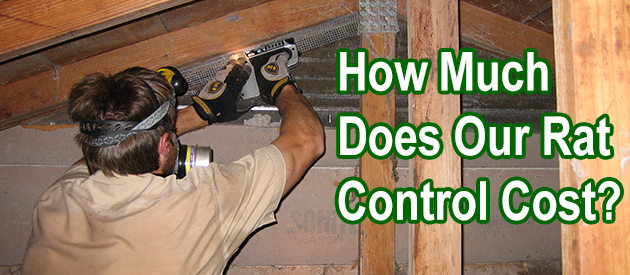Gwinnett County, Lawrenceville Rat Control Situation:
Hi David, Wow, you have a wonderful website, chock full of helpful information. I do think I need to schedule an appt. for an estimate on cleanup..in the crawl space, under my bathroom floor. There is a terrible odor in my 7 X 3 ft one and only bathroom in the Lawrenceville GA area. (I am experienced....had rat nest in p trap of bathtub 5 yrs. ago). Omg Pest Control set traps and sealed the 2 spots we could find that seem most suspect to rat entry , and there were droppings, urine under the bathroom area. I will wait til we catch something before I have your guys come. Of most concern, is wanting someone to look carefully into that bathtub p-trap area with a snake flashlight (Omega will try to come up with one by monday)....I want to know where the urine saturation is... I have respiratory reaction (coughing, using albuterol inhaler, Kaiser pulmonologist concerned) I want to know if you can cleanse the areas well for cleanup, disinfect, etc so that the rat phernomes, etc don't linger. Most of all, I want my bathroom back! It is horrible!! Please let me know if you schedule online, and a timeframe, more info on cleanup! thanks so much, mary
Lawrenceville Rat Control Tip of The Week
The Myth That Poison Makes Rats Thirsty And Die Outside
No, rat poison doesn't make the rat thirsty. Poison doesn't make the rodent go out to drink, and along these lines die outside. Rat poison makes the rat dormant, and it dies any place it happens to be at when the poison takes effect. Since the rats living inside a house or building invest most of their energy inside the structure, they usually die inside that building, not outside.
Will Poison Make A Rat Thirsty And Die? (NO - That's A Myth)
Individuals use poisons since they think it is a protected, viable, hands-off strategy for evacuating pests. They have certain thoughts regarding it, but what amounts of those thoughts are true? One thought many convey is that poison will make rodents thirsty. When they consume the poison, they will out of nowhere have a solid, insatiable thirst. That will lead them outside, looking for water, where they will inevitably die. With this thought, poison appears to be the undeniable answer. It gets the rats out and kills them, getting rid of your concern with few to no drawbacks. The problem is, none of that is valid. Poison won't have this impact on rats or mice, or some other animal so far as that is concerned.
Using poison doesn't prompt thirst. It won't cause the rat(s) to leave the property, and go outside to find water. None of this is true; they are all myths. Poison will kill rats, however, not through thirst. Poisons kill rats in different ways, contingent upon the kind of poison you use. No poison will make the rodent want to leave the property whatsoever.
With each one, there is a higher possibility of the rat dying in your home. Ordinarily, this is going to mean within your dividers. Poisoned rats and mice are likely going to build up inside the dividers, and that is if they all eat the poison. There are various issues with poison, such as its ability to kill other animals, and the pain it inflicts on the rats, which adds to the negatives of it as a solution to pest invasions.


